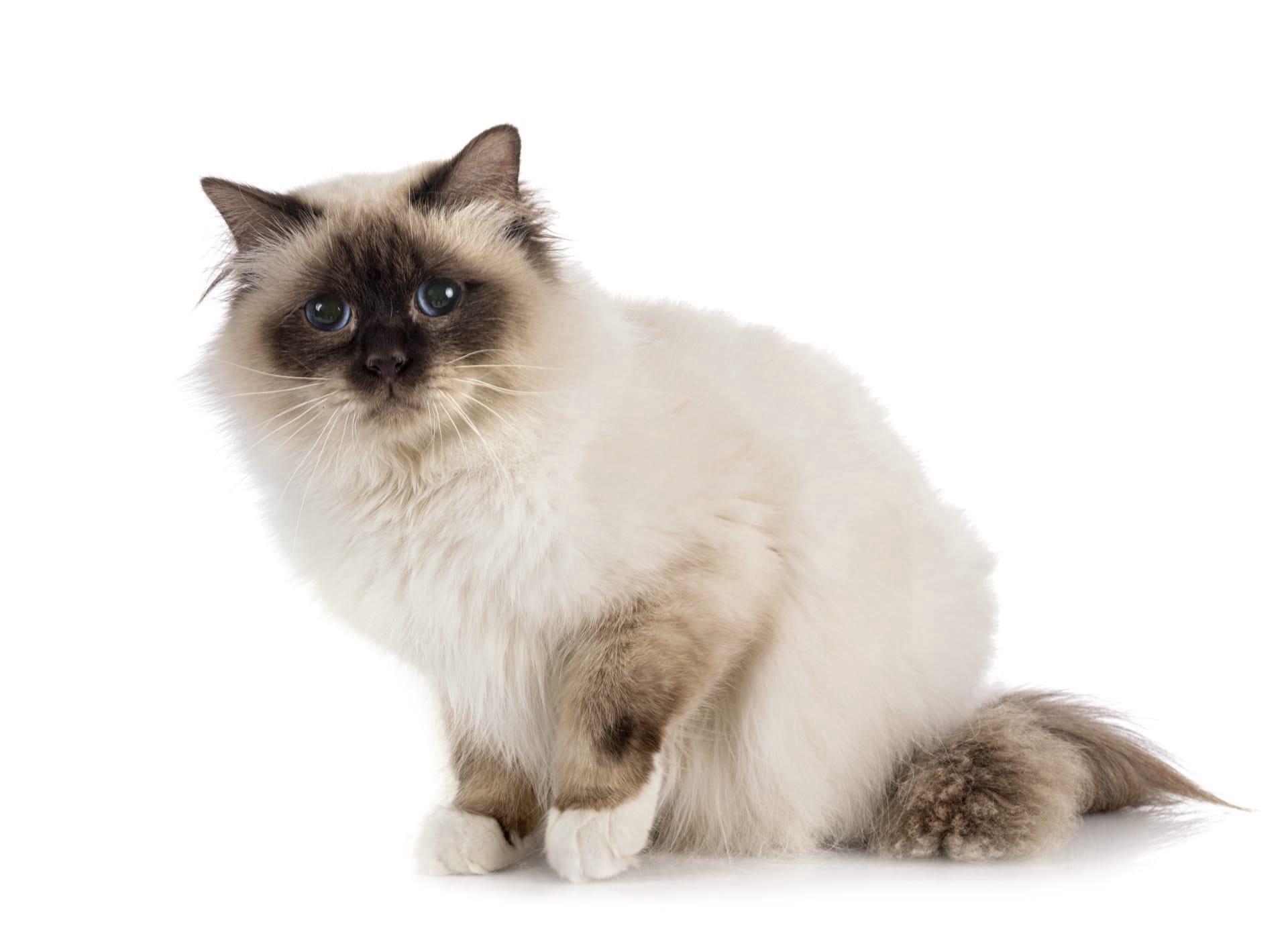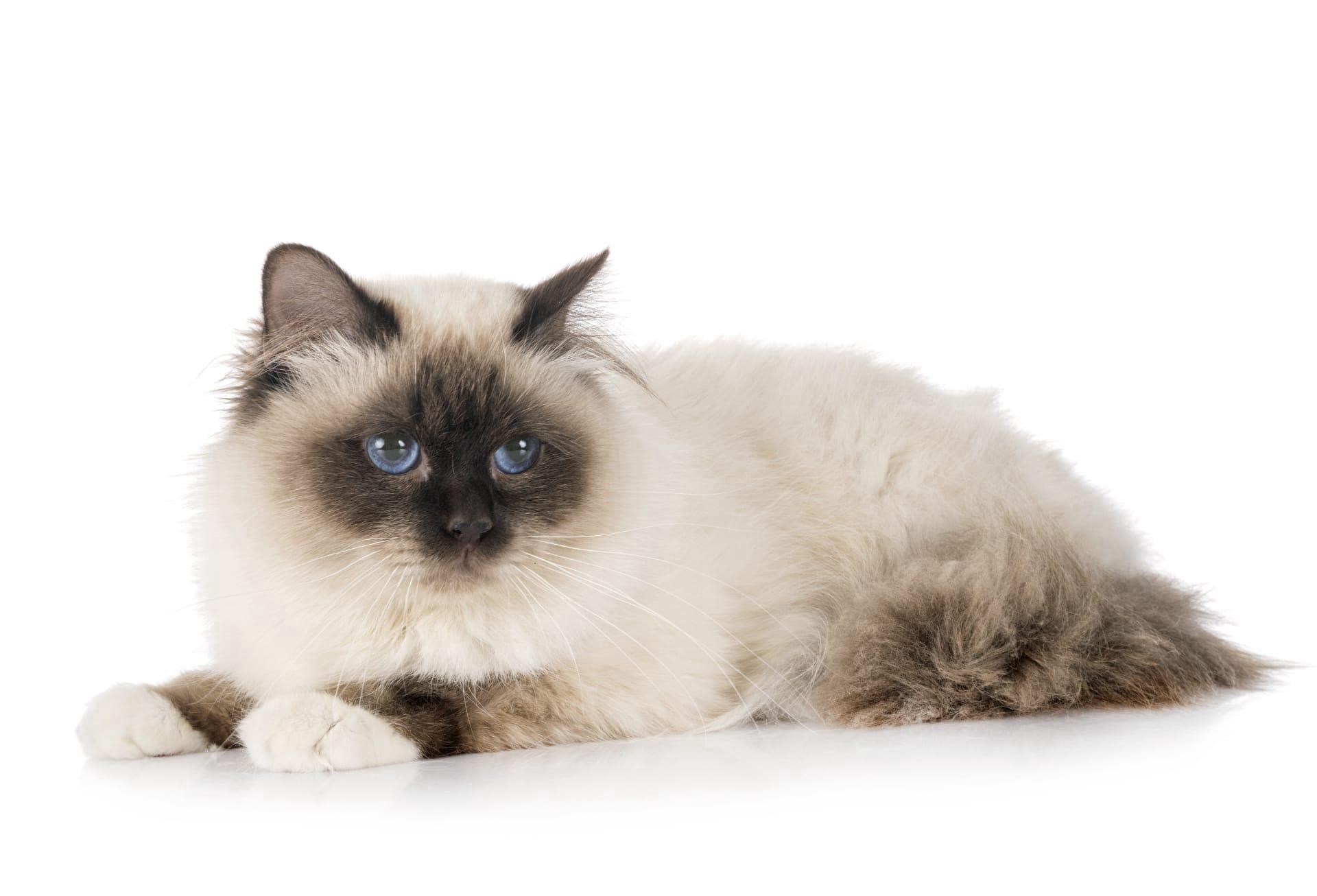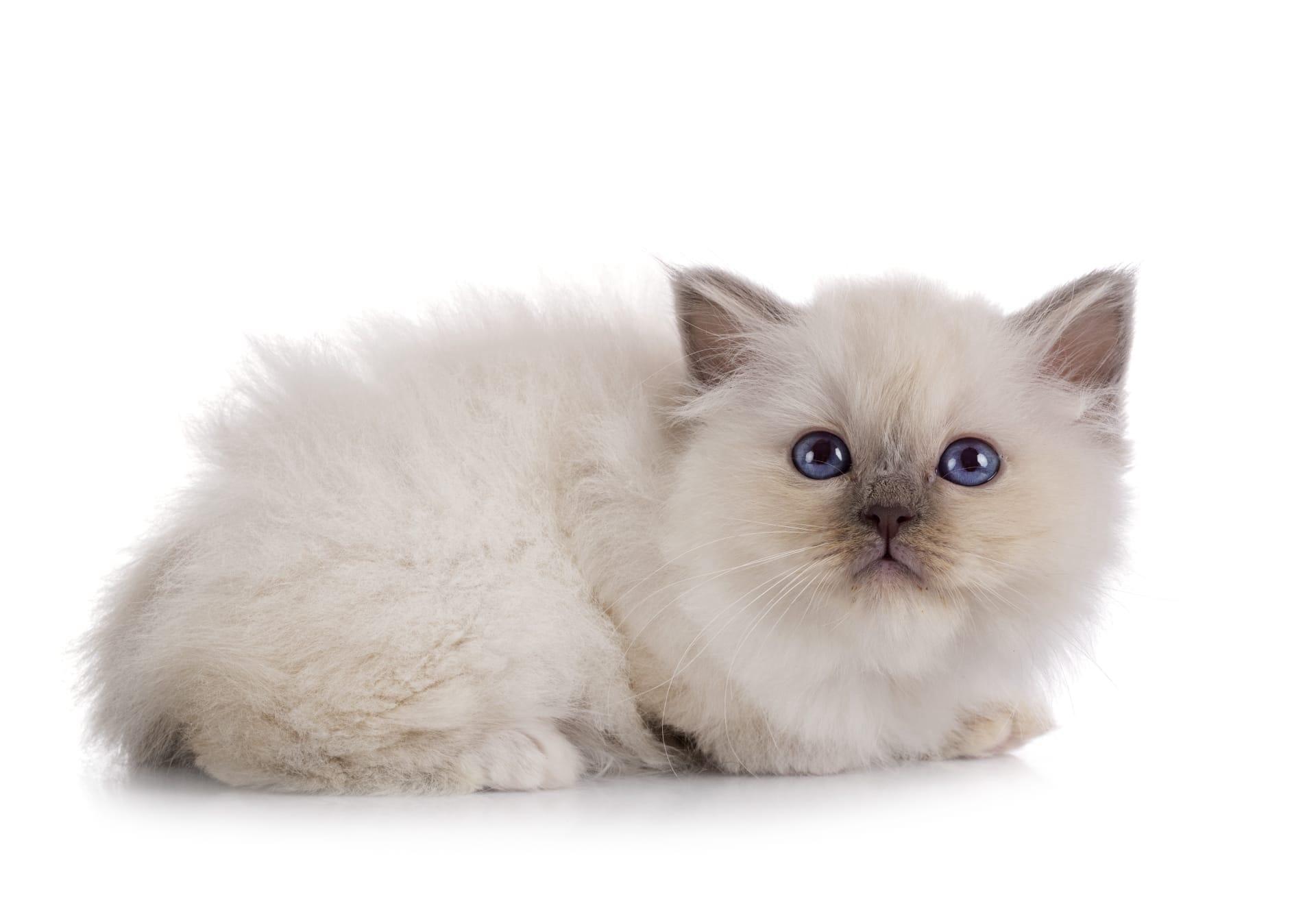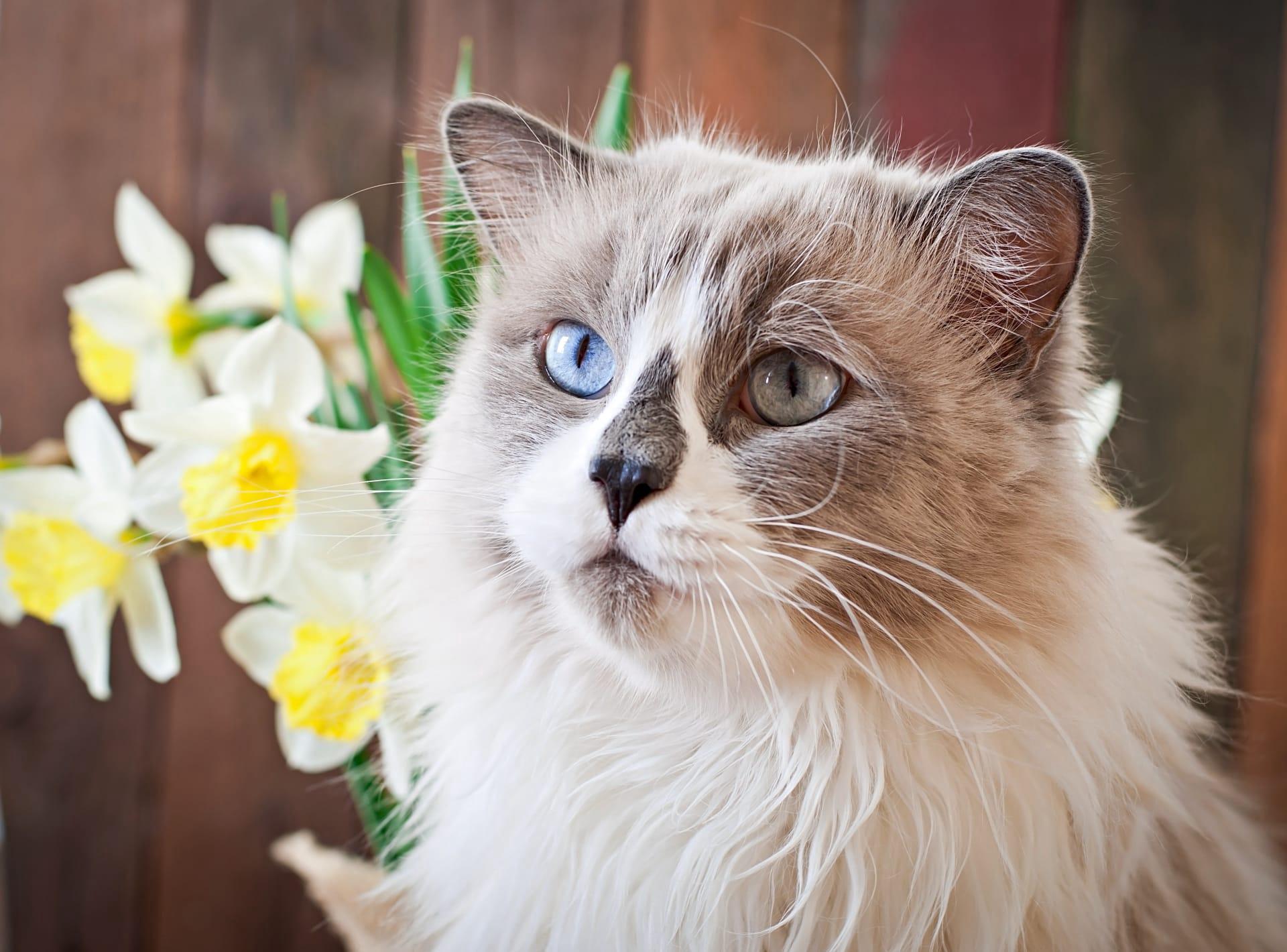Birman Cat Characteristics
- Home /
- Mini Encyclopedia /
- Animal /
- Birman Cat Characteristics
1
Birman Cats, known for their striking appearance and gentle demeanor, stand out with their medium to large body size, typically weighing between 6 to 12 pounds (2.7 to 5.4 kilograms). They possess a robust build, with a rounded torso, sturdy legs, and a medium-length tail. Their coat is long and silky, less prone to matting compared to other long-haired breeds. A defining feature is their color-point pattern, similar to that of Siamese cats, with contrasting colors on their ears, face, paws, and tail against a lighter body color. Their eyes are deep blue, round, and expressive, adding to their enchanting appearance. Birman Cats have a notable lifespan, often living well into their teens, with some reaching 15 years or more, given proper care and a healthy environment.
The most remarkable organ of the Birman Cat is arguably its eyes. The deep, sapphire-blue eyes are not only captivating but serve as windows to the cat's health and emotions. These eyes are highly sensitive to changes in light, allowing them to see in lower light conditions than humans can. This sensitivity is attributed to a high concentration of rods in the retina, which are photoreceptor cells responsible for detecting light and movement. This adaptation not only enhances their nocturnal hunting abilities but also facilitates their communication with humans and other animals, as their eyes can express a wide range of emotions and intentions.

2
Question: What is the most effective way to maintain the coat of a Birman Cat?
Answer: The coat of a Birman Cat, known for its luxurious length and silkiness, requires regular grooming to maintain its health and sheen. Unlike other long-haired breeds, the Birman's coat does not mat easily, but it still benefits greatly from being brushed two to three times a week. A wide-toothed comb or a soft bristle brush is ideal for this purpose, as it helps to remove loose hair and distribute natural oils throughout their coat. This grooming routine not only keeps their fur in pristine condition but also strengthens the bond between the cat and its owner. Additionally, during the shedding season, which typically occurs in spring and fall, increasing the frequency of brushing can help manage the shedding and prevent hairballs.

3
Birman Cats are known for their balanced activity levels. They enjoy a good mix of playtime and relaxation, making them well-suited to various living environments. Their playful side often emerges with interactive toys or a simple game of chase, encouraging mental stimulation and physical exercise. Despite their playful nature, Birmans also cherish their downtime, often seeking out warm, quiet spots for naps. This blend of activity and rest helps maintain their physical health and emotional well-being.
When it comes to eating habits, Birman Cats do well on a balanced diet of high-quality cat food. They can be fed both dry and wet food, with a preference for meals spaced throughout the day to mimic their natural hunting patterns. Fresh water should always be available, and portions should be controlled to prevent overfeeding, as Birmans can be prone to weight gain if their diet is not monitored. Their diet can be supplemented with occasional treats, which can also serve as a bonding tool and a way to reinforce positive behaviors.

4
The ideal living environment for a Birman Cat is one that provides a blend of comfort, stimulation, and safety. They thrive in indoor settings where they can explore and play without the risks associated with outdoor life. Birmans are social creatures that bond closely with their families, appreciating the presence of humans or other pets to interact with. Their environment should include climbing structures, scratching posts, and hideaways to support their physical and mental health. While they adapt well to apartment living, they also enjoy having access to safe, enclosed outdoor spaces like a balcony or a secure garden.
Birman Cats exhibit a strong reproductive instinct, with females typically going into heat several times a year. Responsible breeding requires understanding their genetic traits and health considerations. Litters usually consist of two to five kittens, which are born white and develop their distinctive color points as they mature. Early socialization and health care are crucial for the development of the kittens, who depend on their mother and human caregivers for nutrition, warmth, and protection during their first weeks of life.

5
Book: "The Sacred Cats of Burma" by Marie-Hélène Bonnet, France, 2010. This insightful book delves into the enchanting world of Birman Cats, tracing their origins and mystical stories back to Burma. Marie-Hélène Bonnet, a renowned cat behaviorist, offers a comprehensive guide to understanding the unique traits, care needs, and the spiritual significance of these beautiful cats. Readers will find detailed chapters on their history, breed standards, and tips for maintaining their health and well-being.
Book: "Birman Cats: A Complete Pet Owner's Manual" by Laura Lushington, United Kingdom, 1999. Laura Lushington, an experienced cat breeder, provides a practical and thorough overview of caring for Birman Cats. The book covers everything from selecting the right Birman kitten to understanding their behavior and nutritional needs. It is packed with advice on grooming, health care, and creating a stimulating environment for these affectionate and playful companions. Through personal anecdotes and expert insights, Lushington's book is an invaluable resource for both new and seasoned Birman cat owners.